Dod Procter: A Portrait of the Artist
"Dod will dwell in the memory of her friends and admirers."
Dod Procter was one of the most celebrated artists of the early twentieth century and is probably best remembered for her distinctive portraits of young women.
According to her birth certificate, she was born Doris Margaret Shaw in Hampstead on 21st April 1890. However, the exact year of her birth is unclear, with other records giving the date as 1891 and even 1892.
Her father Frederick, also born in Hampstead, was a ship’s doctor, and her mother Eunice, born in Douglas on the Isle of Man, was a former Slade School of Art student. Gerard, her older brother, was also born in Douglas in 1888.
Though Hampstead was comfortable and affluent, with notable neighbours that included the artist Walter Sickert, by 1901, the family were living in Tavistock, Devon.
Dod’s artistic talent, evident from a young age, could be seen in the illustrated ‘Nature Notes’ she would send with letters to her father when he was away at sea.
My dear Daddy,
The garden is getting on very well thair are three tomatoes nearly ripe, one is reddie, another is yellow, the third is light yellow. The marowe are getting on very nicely, and Mother picked three roses out of the garden, the kitten is growing very fat, the peaches are looking very pretty, the plumbago has got seven clusters on it and the greenhouse looks very gay, when Mr Abraham wants some marows he will be able to pick some, because they have grown so big that they go right over the wall,
from your loveing Doris Margaret Shaw
Sadly, her childhood, which seems to have been a happy and untroubled one, would be shattered by the sudden death of her beloved father in 1905.
Following Frederick's death, her mother, Eunice, moved with Gerard and Dod to Newlyn, a small fishing village in Cornwall. They shared a large Georgian house overlooking the harbour with several female lodgers and their landlady, Mrs Tregurtha.
Towards the end of the nineteenth century, Newlyn became popular with artists attracted to the area's dramatic landscape and natural light. The Opie Memorial Art Gallery opened in 1895, and artist Stanhope Forbes founded the Newlyn School of Art in 1899.
As the nineteenth century became the twentieth, a new generation of artists moved into the area, including Laura and Harold Knight, Harold and Gertrude Harvey, Thomas Cooper Gotch and Lamorna Birch.
Though already a proficient artist, Dod enrolled at the Newlyn School, where she met fellow artist Ernest Procter, four years her elder.
Ernest had been born into a Quaker family in Northumberland and, like Dod, had also lost a parent at a young age. Though they had markedly different personalities, with Dod a restless extrovert and Ernest quiet and practical, they fell in love. Ernest would regularly travel north to visit his family, and they would write innumerable letters to one another while he was away.
Darling, I’m looking forward to meeting you so much; only always when I’m waiting for the train my heart beats so hard and quickly that it simply bumps me! I go to the waiting room, and look in the glass to see if I’m looking tidy - and nice. I pat my hair put my hat straight; I hear the train - a final glance - and I zoom down the platform - looking, looking - till I suddenly find my eyes looking straight into yours - and then we shake hands and I say politely ‘Where’s your luggage’ and you just go on looking. I’m only talking nonsense. Do you know I’ve got a most awful bruise on my skin.
Letter from Dod to Ernest
On 9th April 1912, shortly before her twenty-second birthday, Dod and Ernest married in a small ceremony witnessed only by her mother, his father, and artist and neighbour Charles Walter Simpson. They honeymooned in France, and their son Willmott Ayton Proctor was born on 13th February 1913.
When the First World War broke out in 1914, they were both busy with family and work in Newlyn. As a Quaker, Ernest was a conscientious objector but wanted to contribute to the war effort and joined the Friends’ Ambulance detachment unit instead and travelled back to France.
He and Dod exchanged many letters again, with Dod sending him updates on work and life back home.
I had an awful morning in the studio trying to draw out that picture. I came in to dinner with a gnawing at my heart - I did really and then suddenly I thought of something and dashed out directly after dinner and drew the whole thing in about an hour. I was so glad - I felt quite light and full of hope and energy - I have had some horrible hours with it! I’ll send you a little drawing of it, I think it is Ethel (or will be) standing by a ‘standpipe’ waiting for the bucket to fill and a child hanging on to her and Bill clasping an orange in both hands.
In 1917, fearful that he would not survive the war, Ernest wrote to let her know he wanted only happiness for her and Bill.
Remember, life can’t stand still - it must move on - and you with it… Perhaps you will have had the best times with me - in fact I know you have (and thank God for giving us them together)… Bill will be alright - the only thing that bothers me about him is that I’m afraid you won’t fit him out for the practical dull parts of life - you don’t know them and realise how most people have to live them.
By November 1918, the war had ended, and Ernest arrived home the following February. He and Dod had survived, but their time apart had been an emotional struggle.
Later that year, Ernest was commissioned by Chinese millionaire Lim Ching Tsong to paint a series of murals for his palace in Burma. Accepting the commission, he and Dod left Newlyn on Christmas Eve, leaving Bill with his nanny. Ching Tsong was unhappy with their work, though, and refused to pay them what had been agreed. Instead, they supported themselves financially by painting portraits of the local people. When they returned to Newlyn in November 1920, Dod continued to focus on portraiture with delicate, almost sculptural studies of solitary female subjects.
Cissie Barnes, the sixteen-year-old daughter of a Newlyn fisherman, was a regular sitter for Dod at that time and modelled for her most famous work, Morning.
Praised by the public and critics alike, Morning was voted Picture of the Year, exhibited in a New York gallery, and went on a two-year tour of Britain before being bought by the Daily Mail for the Tate.
[Morning is] a new vision of the human figure which amounts to the invention of a twentieth century style in portraiture… She has achieved apparently with consummate ease that complete presentation of twentieth century vision in terms of plastic design after which Derain and other much praised French painters have been groping for years past.
Frank Rutter, Art Critic, The Sunday Times, 1927
Following her success, she and Ernest began to split their time between Cornwall and London and were both accepted as members of the New English Art Club. Other members around that time included Duncan Grant, Mark Gertler, Stanley Spencer, Paul Nash and Augustus John.
As the 1920s became the 1930s, her painting technique changed considerably, from the solid sculptural lines and bodies of colour seen in The Golden Girl (above) to a much softer and Impressionist style.
In October 1935, Dod’s life was shattered once again when Ernest suffered a fatal heart attack at age fifty. In the years after his death, she travelled extensively and experimented even further with style and subject matter, adopting a pointillist technique and painting landscapes, children and still life.
Newlyn was still home, though, and Dod lived there until her death on 31st July 1972, aged eighty-two, when she was laid to rest next to Ernest in St. Hilary Churchyard.
Dod will dwell in the memory of her friends and admirers as an artist in the all-too-rare and fullest sense. In her work she transmitted her vision and lively appreciation of things seen with consummate and individualistic craftsmanship.1
Thank you for reading! If you enjoyed this biography, please leave a comment and/or like and/or share it. Until next time…
Images:
Images on Beyond Bloomsbury are usually credited. I conduct thorough picture research, but please let me know if you believe a credit needs to be added or corrected. Thank you!
Sources and Recommended Reading:
Fox, Caroline, Painting in Newlyn: 1900-1930 (Barbican Art Gallery, 1985)
James, Alison, A Singular Vision: Dod Procter 1890-1972 (Redcliffe Press Ltd, 2009)
Welch, Noel, A Memoir of Dod Procter (Cornish Review, 1972)
Alethea Garstin, Western Morning News, 9th August 1972

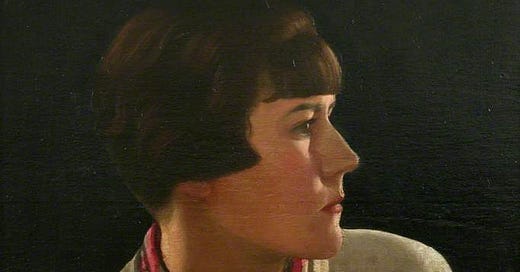




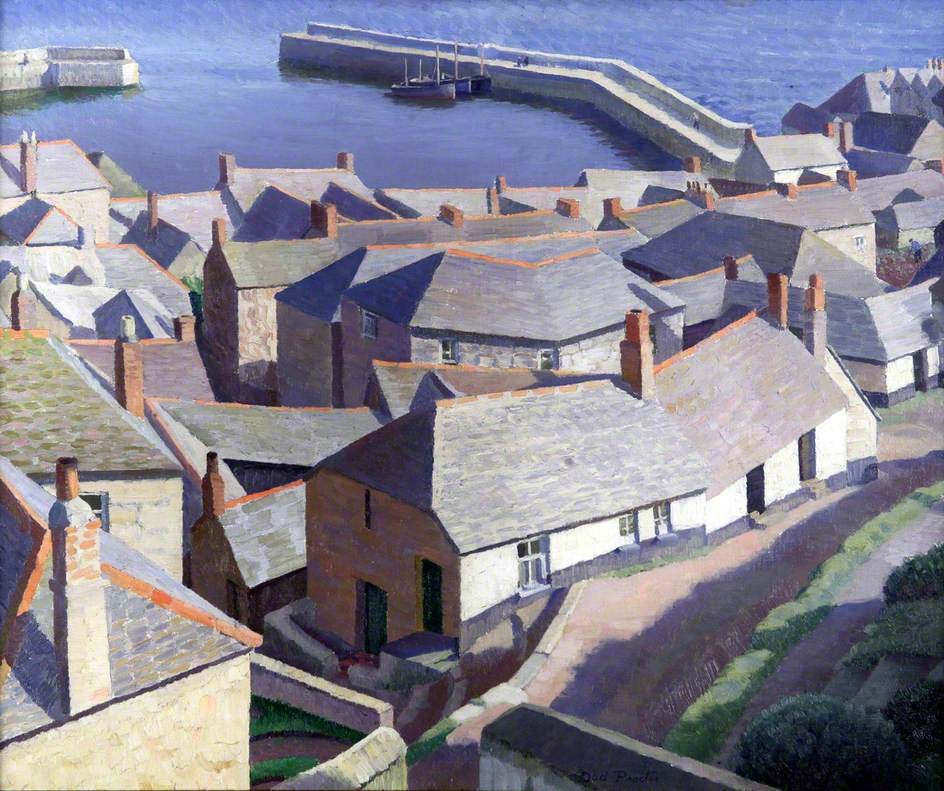
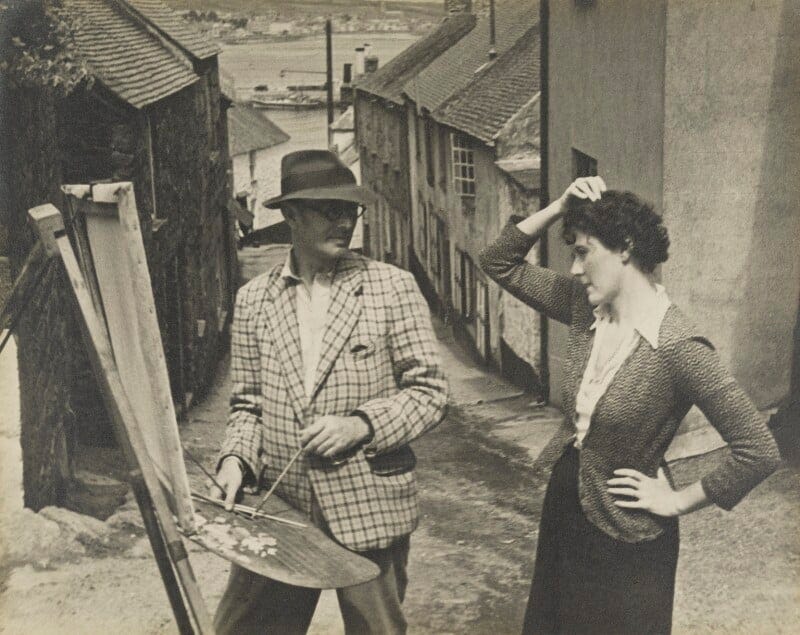
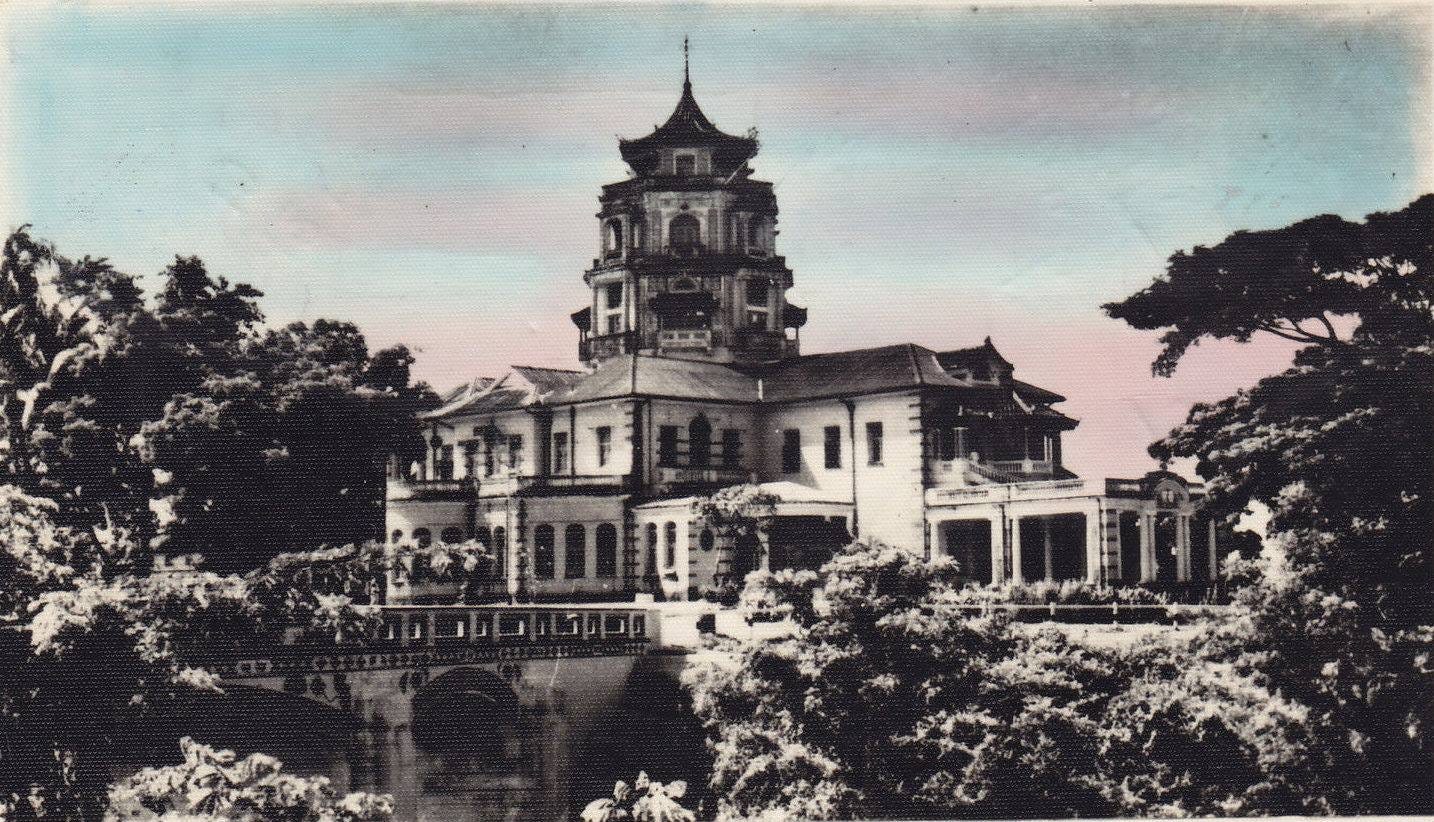
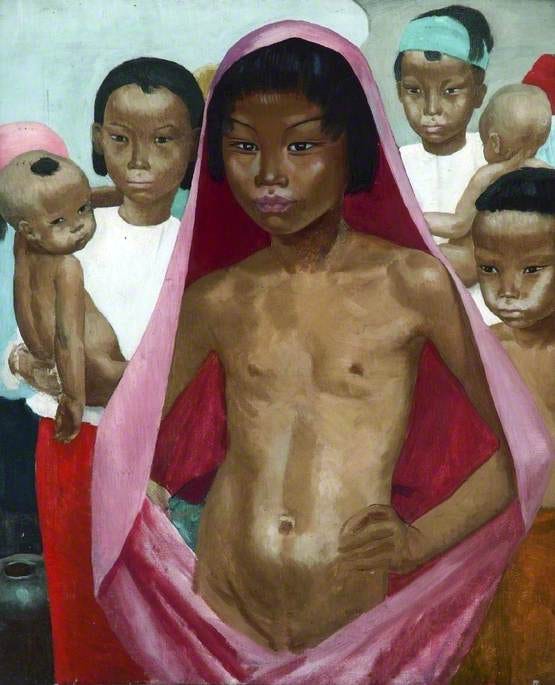
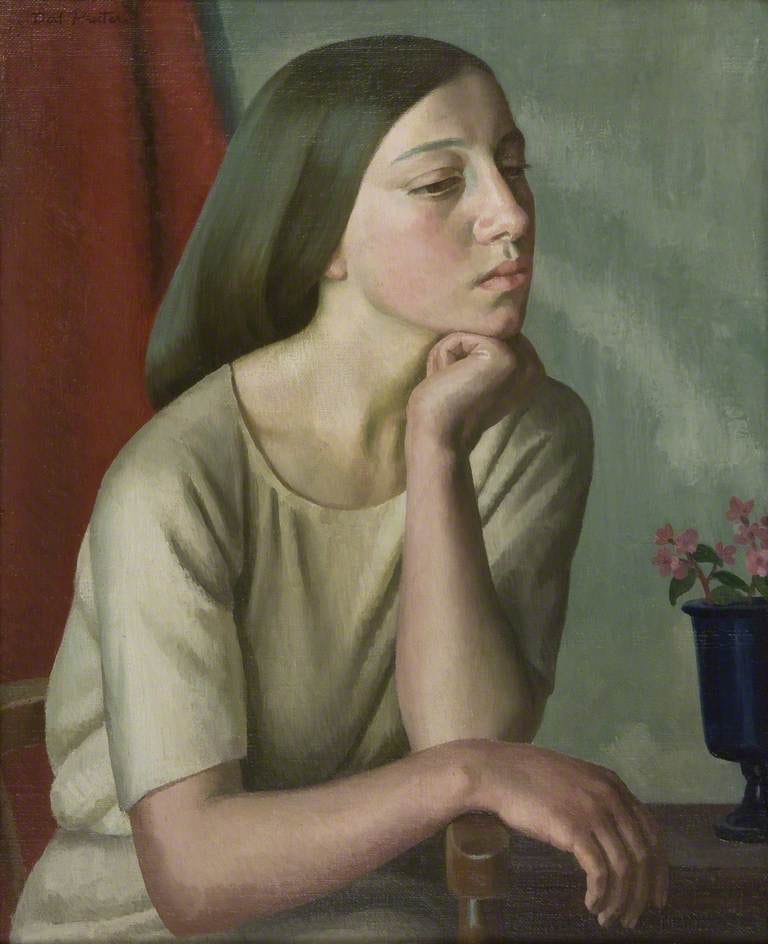
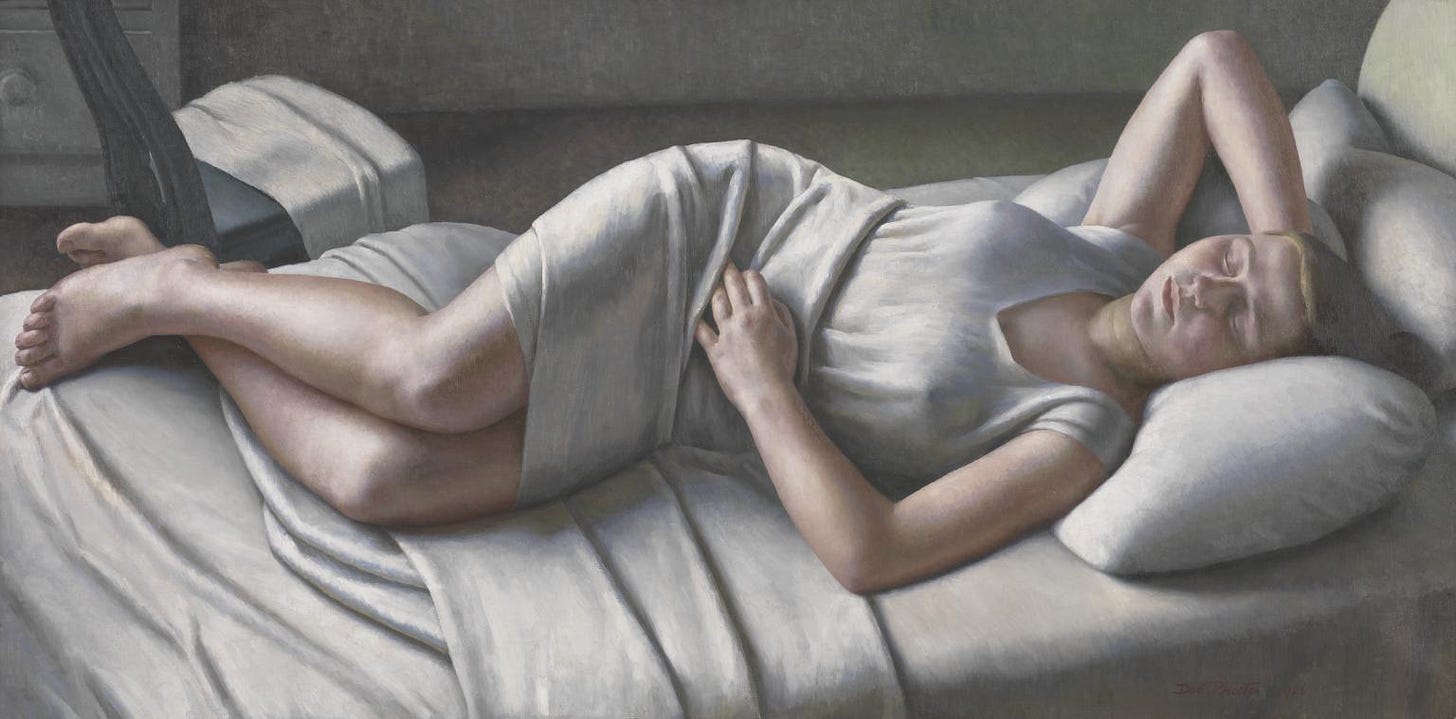
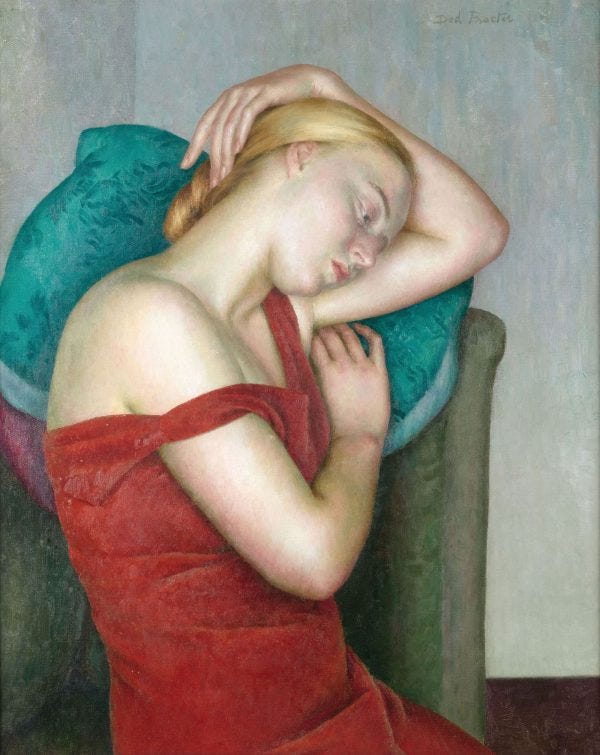
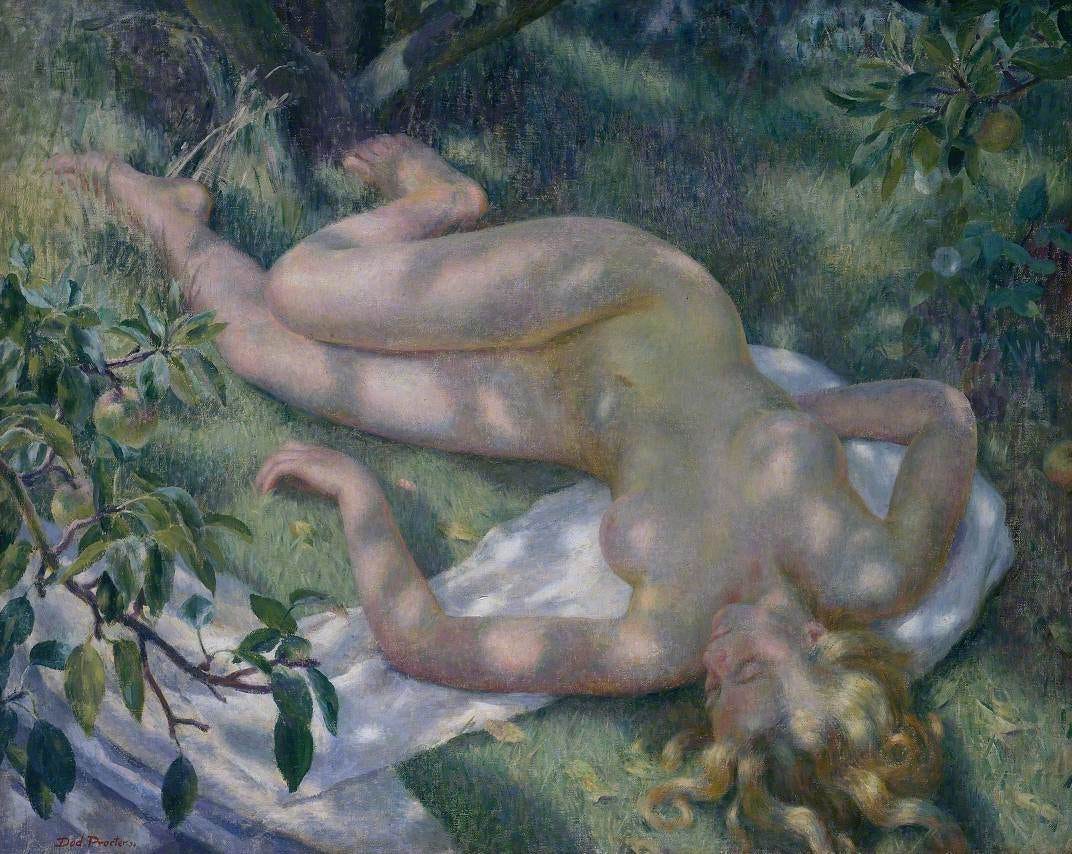
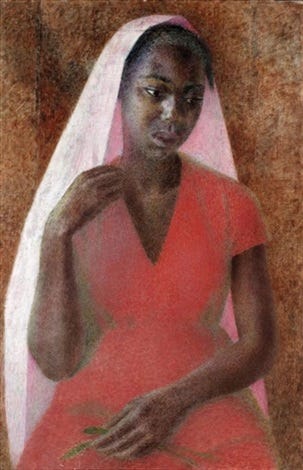



I had not heard of her. Thank you for introducing me to her beautiful art. A really interesting read.
I came back to this post having done a bit of research to discover the Shaw family home in Tavistock. I’d always understood it was Bannawell Street, home to many of the town’s tradesman, but in fact the address on the 1901 census is 2 Tor Villas in Watts Road. These are still grand Victorian houses, elevated above the town and with extensive views across to Dartmoor. The family had a housekeeper and a maid and many of these houses still have their ‘downstairs’ accommodation. They would certainly have been considered an upper class family in the town. I shall go for a wander along there soon and see if I can find Tor Villa and now I’m wondering where young Dod went to school.